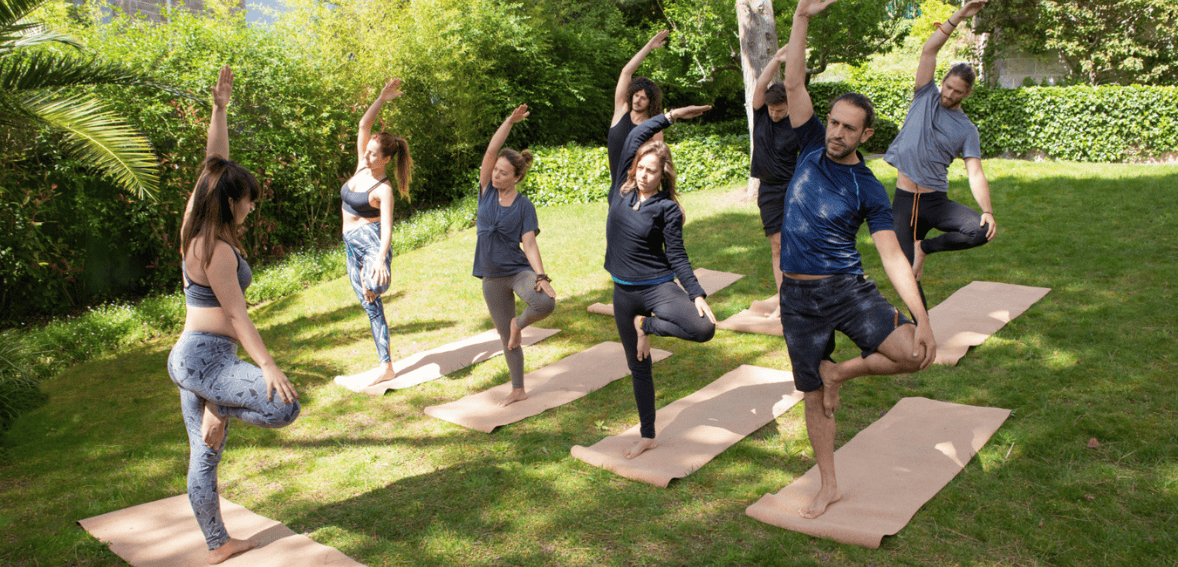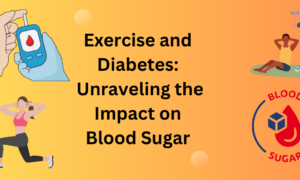The fitness industry has changed a lot over the past few decades, with social trends and health science advancements. But in recent years the biggest shift has been the awareness of sustainability in fitness. People are realising that exercise doesn’t just impact personal health but also the planet. This has given birth to the eco-fitness movement where individuals and communities are embracing practices that nourish both body and planet.
From choosing eco-friendly workouts that produce minimal waste and energy to supporting gyms that run on renewable energy, the eco-fitness movement is changing how we think about health. And outdoor low-impact exercise is getting popular because it not only reduces strain on the body but also avoids the heavy carbon footprint of energy-guzzling workout spaces. The combination of sustainable fitness trends and conscious decision making has given us a new path to walk for those who want to align personal wellness with global responsibility.
What Defines the Eco-Fitness Movement
Eco-fitness is when you incorporate sustainability into your daily fitness routine. It’s about minimising resource consumption, reducing waste and promoting activities that support the balance of the environment. Unlike traditional fitness culture which only focuses on physical results, this approach looks at the ecological impact of your exercise choices. For example, using workout gear made from recycled materials or attending gyms powered by renewable energy is a practical way to do eco-friendly workouts.
A big part of this movement is rethinking the spaces where we exercise. Outdoor low-impact exercise like hiking, cycling or yoga in parks uses the natural environment and reduces our dependence on energy-hungry facilities. Sustainable fitness trends also encourage us to see exercise as part of a lifestyle that values balance, conservation and respect for the planet. By choosing options that prioritise both our health and the planet, the eco-fitness movement is a holistic way to stay active and responsible.
Eco-Friendly Workouts in Everyday Life
You don’t have to think too hard to incorporate eco-friendly workouts into your daily routine. A simple switch from motorized equipment to bodyweight exercises at home uses less electricity and still gets you trained. Resistance bands, jump ropes or even household items can replace complex machines, no waste and flexibility. Walking or cycling for short trips is both transportation and physical activity, in line with the sustainable fitness trend.
Community based fitness activities also show the movement’s inclusive spirit. Outdoor low impact exercise like group yoga in the park or beach workouts reduces the need for aircon studios and artificial lighting. At the same time, these activities connect you to nature, making exercise feel less like a chore and more like a holistic experience. By choosing options that minimizes impact, you can create fitness routines that build strength, health and ecological responsibility at the same time.
The Rise of Sustainable Fitness Trends
Around the world, gyms and wellness brands are getting the message about sustainability and adapting. Some have energy-generating machines where your workout puts electricity back into the grid. Others are investing in recycled flooring, water-efficient showers and zero-waste policies. These are part of broader sustainable fitness trends as businesses want to align with the environmentally conscious consumer.
Individually, eco-friendly workouts are entering the mainstream conversation. Fitness enthusiasts are no longer just talking about personal bests but also the eco-impact of their choices. Outdoor low-impact exercise is being promoted as an alternative that’s kind to your joints and reduces reliance on resource-hungry gyms. The combination of innovation, awareness and demand is pushing sustainable practices deeper into the fitness world and it’s proving exercise and environmentalism can go hand in hand.
Outdoor Low-Impact Exercise as a Core Practice
Low impact workouts like walking, swimming and cycling have been around for ages for joint protection and injury prevention. Now they’re being rebranded as eco-friendly practices for the planet too. Outdoor low impact exercise means no artificial climate control, no electric machines and no resource heavy infrastructure. Just running along a nature trail or doing yoga outdoors is the principle of combining personal health with environmental care.
These exercises also promote mental well being as time spent outdoors has been shown to reduce stress and increase overall happiness. Eco friendly fitness trends say wellness isn’t just physical endurance or muscle growth but mental balance and environmental connection. By choosing activities that require nothing more than space and commitment you’re doing eco-friendly workouts that support long term health for yourself and the world around you.
Eco-Conscious Fitness Gear and Apparel
One of the often overlooked areas of the fitness industry is the environmental impact of clothing and gear. Synthetic fabrics contribute to pollution and waste, disposable plastic bottles and accessories put extra strain on the planet. The eco-fitness movement is about using gear made from recycled or biodegradable materials, it’s an alternative to eco-friendly workouts. For example, yoga mats made from natural rubber or leggings made from recycled plastics reduce waste and do the same job as regular products.
Sustainable fitness trends also highlight the importance of longevity in products. Instead of buying cheap gear that wears out fast, investing in durable eco-friendly gear means you don’t have to consume and waste again. Outdoor low-impact exercise makes it easier to gear minimally, as many activities require only supportive shoes and comfy clothes. The move towards sustainable apparel shows how individual choices, multiplied by millions of consumers, can make a real impact on global sustainability.
Community and Collective Impact
The eco-fitness movement is not just about individual choices but also about collective transformation. Communities that embrace eco-friendly workouts create a ripple effect, inspiring more people to participate in sustainable practices. Gyms, wellness centers, and even city governments are beginning to offer initiatives that promote greener lifestyles, from organizing outdoor low-impact exercise events to supporting the construction of more green spaces for public fitness.
Sustainable fitness trends thrive in shared environments because group participation increases visibility and motivation. When communities rally around eco-conscious exercise, they help normalize behaviors that benefit both health and the planet. Public parks that host fitness classes or urban cycling programs demonstrate how infrastructure can encourage environmentally responsible habits. Collective participation strengthens the cultural foundation of the eco-fitness movement, ensuring it grows into a long-term lifestyle rather than a temporary trend.
Technology’s Role in Eco-Fitness
While the eco-fitness movement emphasizes simplicity and natural approaches, technology still plays an important role in supporting sustainability. Fitness apps, for example, encourage users to track eco-friendly workouts while reducing the need for paper-based training guides. Virtual classes reduce the need for commuting, cutting emissions while still providing access to structured exercise.
Some wearable devices now include features that calculate not only calories burned but also carbon savings achieved by walking or cycling instead of driving. Sustainable fitness trends use this data to motivate individuals by connecting health benefits with environmental impact. Even in outdoor low-impact exercise routines, technology enhances awareness, making it easier for people to appreciate the broader implications of their actions. By combining innovation with eco-conscious values, technology helps make sustainability a more tangible and rewarding part of fitness.

Challenges Facing the Eco-Fitness Movement
Despite its growing popularity, the eco-fitness movement faces challenges. One major barrier is accessibility, as not all communities have easy access to green spaces or sustainable gyms. Eco-friendly gear can also be more expensive upfront, discouraging widespread adoption. Additionally, many people are unaware of how their fitness routines affect the environment, which limits participation in eco-friendly workouts.
There is also the challenge of consistency. While outdoor low-impact exercise may be ideal in many regions, seasonal changes and weather conditions can make it less practical year-round. Sustainable fitness trends must therefore balance ideal solutions with realistic adjustments. Overcoming these barriers requires education, investment, and innovation. By addressing these challenges openly, the eco-fitness movement can expand inclusively and ensure that sustainability becomes a standard part of global fitness culture.
The Future of Sustainable Fitness
Looking ahead, the eco-fitness movement is set to grow as both consumer demand and environmental urgency increase. Future gyms may be entirely self-sustaining, powered by renewable energy and designed to operate with zero waste. Outdoor low-impact exercise may become even more integrated into urban planning, with more parks, cycling lanes, and open spaces dedicated to public wellness.
Eco-friendly workouts will continue evolving, combining innovation with simplicity. Advances in materials science may produce clothing and equipment that are fully biodegradable without sacrificing performance. Sustainable fitness trends will also expand through corporate wellness programs and government initiatives, embedding environmental consciousness into everyday routines. As awareness grows, the eco-fitness movement promises not only to improve personal health but also to support a healthier, more sustainable planet.
Green Gym Initiatives and Energy Generation
One of the most exciting aspects of the eco-fitness movement is the rise of gyms that focus specifically on sustainability. These “green gyms” are designed not only to provide health benefits but also to reduce energy consumption and waste. Many are now installing exercise equipment that generates electricity as people work out, feeding power back into the facility. This approach aligns perfectly with eco-friendly workouts, since each session contributes directly to reducing carbon emissions.
Water-efficient showers, LED lighting, and recycled flooring further reinforce the values behind sustainable fitness trends. Green gyms also promote outdoor low-impact exercise by encouraging members to blend indoor and outdoor activities for balanced routines. These initiatives show that businesses can innovate to combine health and sustainability, making fitness a shared responsibility between individuals and the planet. By supporting such facilities, consumers reinforce demand for responsible practices and help shape the future of eco-conscious fitness spaces.
Nutrition and Sustainability in Fitness
Exercise routines and nutrition are deeply connected, and the eco-fitness movement extends its influence into dietary habits as well. Sustainable nutrition emphasizes plant-based meals, locally sourced produce, and reduced reliance on heavily packaged foods. Choosing these options supports eco-friendly workouts by fueling the body without placing additional stress on the planet. For many fitness enthusiasts, adopting sustainable diets becomes a natural extension of their exercise routines. By aligning nutrition with sustainable fitness trends, individuals create a more holistic lifestyle that promotes long-term health.
Outdoor low-impact exercise often complements these choices, as spending more time in natural settings tends to inspire environmentally conscious eating. Beyond personal benefits, sustainable nutrition reduces food waste, lowers greenhouse gas emissions, and strengthens local food systems. The combination of mindful eating and eco-conscious exercise reflects the interconnected nature of health and sustainability, demonstrating how fitness extends well beyond physical activity into daily living.
Mental Wellness and Nature Connection
The eco-fitness movement also recognizes the mental health benefits of connecting with nature. Outdoor low-impact exercise, such as mindful walking, forest yoga, or cycling along green trails, provides opportunities to reduce stress while minimizing environmental impact. Unlike crowded gyms filled with artificial lighting and noise, outdoor spaces create calm, fostering mental clarity alongside physical health. Eco-friendly workouts that take place outdoors encourage mindfulness, allowing individuals to slow down and appreciate their surroundings.
This connection to nature aligns with sustainable fitness trends, which emphasize harmony between personal well-being and ecological care. Research has shown that time in green environments lowers anxiety and improves mood, making eco-fitness not just a physical pursuit but also a therapeutic one. By linking exercise routines with the restorative power of nature, the movement highlights the importance of balance. In this way, eco-fitness strengthens both body and mind, while reinforcing the value of protecting the natural world.
Corporate Responsibility and Workplace Wellness
Businesses are beginning to adopt eco-fitness principles as part of their workplace wellness programs. Companies are increasingly aware that employee health and environmental sustainability go hand in hand. By providing incentives for eco-friendly workouts, offering facilities for cycling commuters, or organizing outdoor low-impact exercise events, employers create healthier and more engaged workforces. These practices also reflect broader sustainable fitness trends, as organizations seek to demonstrate responsibility not only toward employees but also toward the planet.
Workplace wellness programs that focus on sustainability reduce energy use and promote healthier lifestyles simultaneously. For example, replacing energy-heavy gyms with partnerships in green fitness centers allows businesses to align values with action. Employees who feel supported in pursuing eco-conscious fitness are more likely to adopt habits that benefit both themselves and their communities. Corporate responsibility in this area ensures that eco-fitness becomes embedded in daily life, extending its influence far beyond individual routines.
Conclusion
The eco-fitness movement represents a powerful merging of health and environmental responsibility. By choosing eco-friendly workouts, supporting sustainable fitness trends, and embracing outdoor low-impact exercise, individuals can strengthen both body and planet simultaneously. What began as a niche idea is becoming a mainstream movement, reshaping gyms, wellness practices, and daily routines worldwide. This movement demonstrates that fitness is not just about personal achievement but also about collective responsibility.
Every choice, from the gear we wear to the spaces we use, contributes to the bigger picture of sustainability. By aligning physical health with ecological care, the eco-fitness movement provides a pathway toward long-term well-being and resilience. It proves that caring for ourselves and caring for the earth are not separate goals but deeply connected parts of the same journey.





















